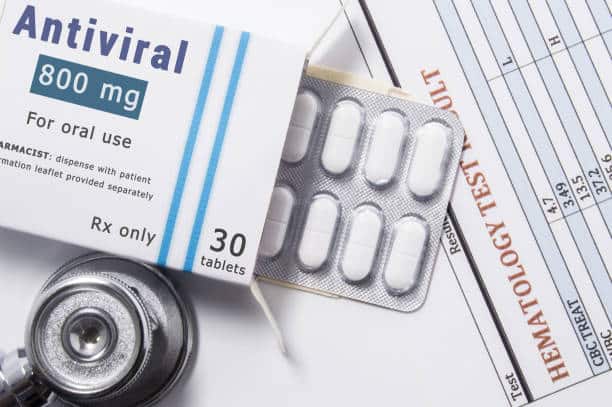Potential Benefits of Ribavirin and Pleconaril in Treating Type 1 Diabetes
Type 1 diabetes (T1D) is a chronic condition characterized by a progressive decline in pancreatic beta cell function, resulting in a lifelong dependence on insulin. Despite extensive research into its immunological, biochemical, clinical, and epidemiological aspects, the exact cause of T1D remains elusive.
Emerging evidence suggests that viral infections, particularly enteroviral infections, may play a role in the development of Blood Sugar. To shed light on this connection, a recent study published in Nature Medicine investigated the effects of administering ribavirin and pleconaril on individuals with newly diagnosed T1D, aiming to stimulate endogenous insulin production. Fill out this form to see if you or a friend qualify for Continuous Glucose Monitors.
The DiViD Study
The Diabetes Virus Detection (DiViD) study was a placebo-controlled, double-blinded randomized control trial (RCT) conducted at the Steno Diabetes Center Copenhagen/Herlev University Hospital in Denmark and the Oslo University Hospital in Norway. The study involved 96 individuals aged six to 15 years who were newly diagnosed with T1D. These participants were divided into two groups: the intervention group and the placebo group.
The intervention group, consisting of 47 individuals (28 males and 19 females), received oral antiviral therapy with ribavirin at a dosage of 7.5 mg/kg and pleconaril at a dosage of five mg/kg, administered twice a day for six months with the goal of preserving pancreatic beta cell function. Meanwhile, the placebo group, comprising 49 individuals (28 males and 21 females), received a placebo treatment.
Read Guide about Wegovy Dosage Guide: The Best Way For Weight Loss
All participants were closely monitored for 26 weeks, with an extended two-year follow-up. The primary endpoint of the study was to assess the endogenous secretion of insulin, measured through the mean two-hour serological C-peptide area under the receiver-operating characteristic curve (AUC) values during mixed-meal tolerance tests (MMTTs) after one year of treatment. Linear mixed modeling was utilized to determine the average marginal effect (AME) for this endpoint.
Secondary study endpoints included peak serological C-peptide values exceeding 0.20 picomoles (pmol)/ml during MMTT, glycated albumin levels, insulin dosage, glycated hemoglobin (HbA1c), and the occurrence of hypoglycemic events like seizures and unconsciousness.
Study Procedures
MMTT tests were conducted in the early morning, with fasting conditions, at the hospitals. Blood samples were collected at 15, 30, 60, 90, and 120 minutes after participants ingested standard liquid meals. Liquid chromatography with tandem mass spectrometry (LC-MS) was used to determine glycated albumin levels.
The presence of enterovirus was detected through reverse transcription-polymerase chain reaction (RT-PCR) assays using nasopharyngeal aspirates, nasal swabs, salivary samples, stool samples, and serological samples.
The study recruited individuals who met the criteria for stage three T1D as per the American Diabetes Association and the International Classification of Diseases, tenth revision (ICD-10) codes. Recruitment took place from August 20, 2018, to October 20, 2020.
Exclusions were made for individuals receiving non-insulin antidiabetic medications, those with hemolytic anemia or significant hematological abnormalities, recent severe cardiovascular disease, renal impairment, participation in other clinical studies within the past three months, pregnant or lactating females, sexually active individuals without efficient contraceptive use, and those with severe medical conditions.
Study Findings
The primary study endpoint was met, as serological C-peptide AUC values were higher in individuals who received antiviral treatment compared to those who received a placebo after one year. The antiviral treatment was well-tolerated by the participants.
At the start of the study, the mean non-log-transformed two-hour C-peptide area under the curve values in the intervention and placebo groups were 0.6 and 0.5 pmol/ml, respectively. After one year, these values were 0.6 and 0.4 pmol/ml, respectively. The relative reductions in serological C-peptide AUC values were 11% among therapy recipients and 24% among placebo recipients.
Around 86% of individuals in the antiviral treatment group and 67% in the placebo group exhibited C-peptide levels above baseline, with a risk ratio of 1.3. HbA1c values were 48 and 51 mmol/mol in the intervention and placebo groups, respectively.
Must Read CGMs in noncritical care hospitals optimizes glycemic control
The HbA1c readings of those who received antiviral medication were considerably reduced at three and six months. After three and six months of therapy, there was a small decrease in the amount of glycated albumin that was present in the intervention group.
At the end of the first year of the study, the insulin dosage-adjusted glycated hemoglobin (IDAA1c) readings were comparable in both research groups. However, at three and six months, IDAA1c values were lower among antiviral treatment recipients compared to placebo recipients. The daily insulin dosage remained similar across both groups during the follow-up period.
Severe hypoglycemic episodes were observed in two placebo recipients but not in any of the antiviral treatment recipients during the initial follow-up year. The incidence of adverse events in the first year was 94% in the intervention group and 96% in the placebo group, with no reports of serious adverse events. Two individuals in the antiviral therapy group developed mild severe acute respiratory coronavirus 2 (SARS-CoV-2) infections after three and five months of treatment, which was not observed in the placebo group.
Also Read Finding T2D High-Risk Children
Conclusion
The results of this study suggest that the combination of antiviral therapy involving ribavirin and pleconaril may help preserve endogenous insulin secretion in young individuals recently diagnosed with T1D. These findings provide a basis for further research to explore the potential of antiviral agents in preventing and treating T1D.


